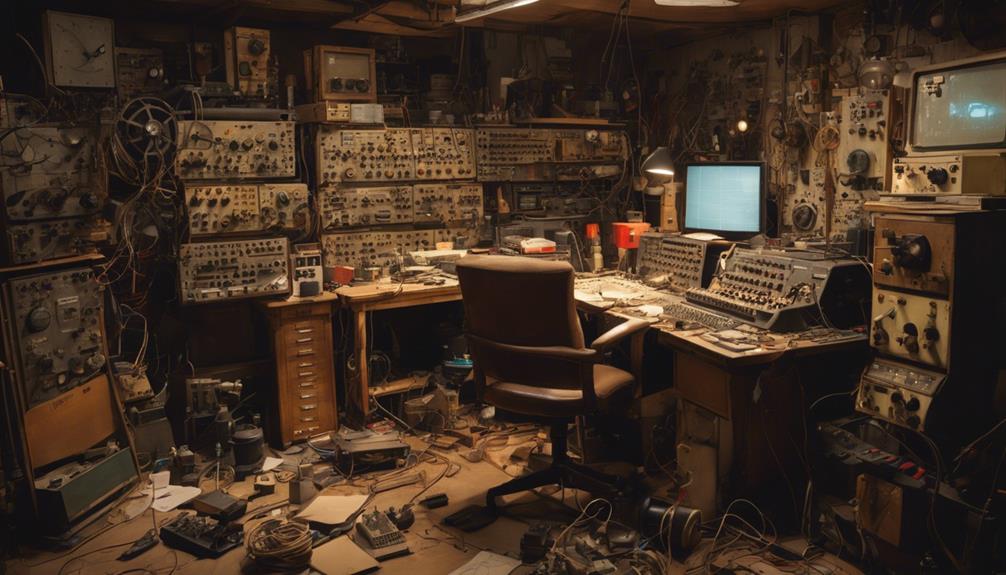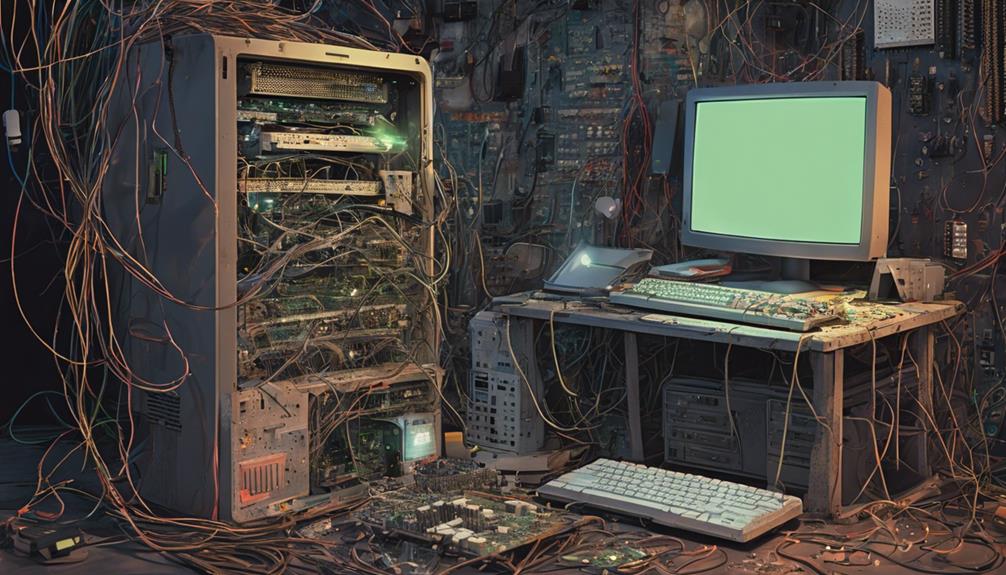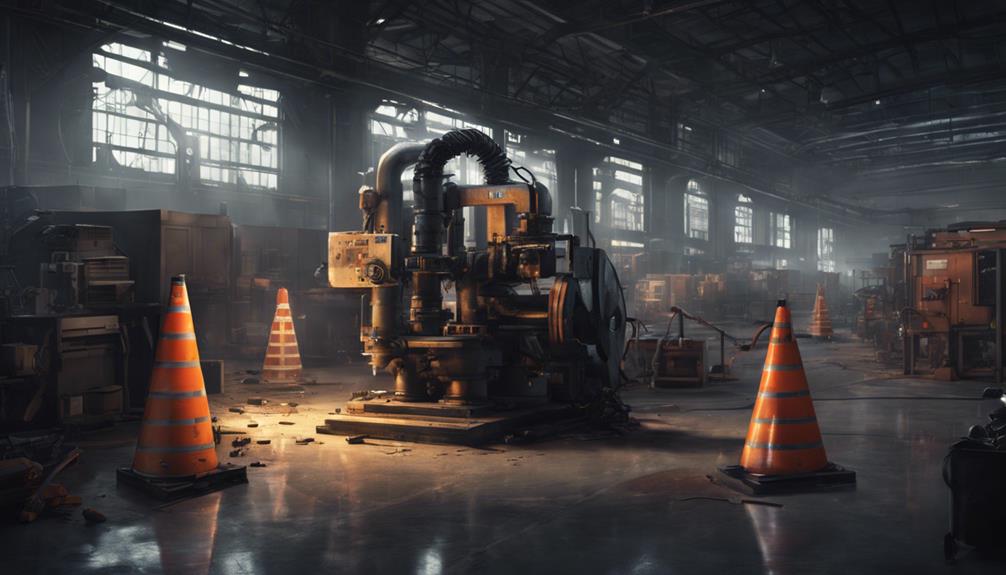Reviving legacy electronics with obsolete component repair requires a meticulous approach. Proactive identification of obsolete components is essential to prevent downtime and failure. Upgrading with modern equivalents can extend equipment lifespan and performance. Advanced techniques such as PCB repair and rework services, failure analysis, and reverse engineering enable the restoration of functionality and reduction of electronic waste. Skilled technicians diagnose and fix issues, saving costs and extending the lifespan of legacy electronics. As we explore the complexities of reviving legacy electronics, the nuances of component sourcing, refurbishing, and preserving legacy technology come into focus, offering a holistic solution to breathe new life into outdated devices.
Key Takeaways
- Proactive identification and replacement of obsolete components prevent downtime and extend equipment lifespan.
- Repair and rework services restore functionality to outdated PCBs, enhancing performance and reliability.
- Failure analysis techniques identify root causes of failure, enabling proactive maintenance strategies to minimize downtime.
- Reverse engineering and 3D scanning enable accurate replication of obsolete components, reducing electronic waste.
- Specialized companies offer solutions to procure and repair obsolete components, supporting critical infrastructure and sustainability efforts.
Identifying Obsolete Components
Component obsolescence is a pervasive issue in industrial settings, where the discontinuation of critical parts can cripple equipment reliability and performance. Identifying obsolete components is essential for maintaining legacy electronics, as it enables proactive measures to mitigate the risks associated with component failure.
Manufacturers conduct lifecycle assessments and monitor market availability to identify components approaching or already obsolete. This proactive approach allows industrial operators to prepare for the eventual discontinuation of critical electronic components.
Obsolete electronic components can be sourced from alternative suppliers or aftermarket solutions, providing a temporary reprieve for legacy electronics. However, this is not a long-term solution, as the availability of these components is also subject to change.
Upgrading legacy electronics with modern equivalents can extend the lifespan and performance of equipment, ensuring continued reliability and efficiency. It is essential for industrial operators to stay vigilant in identifying obsolete components, as the failure to do so can result in costly downtime and equipment failure.
PCB Repair and Rework Services

In addition to identifying and mitigating the risks associated with obsolete components, industrial operators can further extend the lifespan of legacy electronics by leveraging PCB repair and rework services that specialize in fixing and upgrading outdated printed circuit boards. These services help extend the lifespan of legacy electronics by replacing obsolete components, saving companies significant costs compared to buying new equipment.
| Service | Benefit | Industry |
|---|---|---|
| PCB Repair | Restores functionality to outdated PCBs | Aerospace |
| Component Upgrades | Enhances performance and reliability | Industrial Automation |
| Rework Services | Saves costs and reduces electronic waste | Medical Devices |
Skilled technicians in PCB repair services can diagnose and fix issues to restore functionality, and even upgrade PCBs with newer components to enhance performance and reliability of legacy electronics. This is particularly important in various industries, such as aerospace, industrial automation, and medical devices, where electronic systems are critical to operations. By leveraging PCB repair and rework services, companies can breathe new life into their legacy electronics, ensuring continued operation and minimizing downtime.
Component Failure Analysis Techniques

In the domain of component failure analysis, identifying the root cause of failure is paramount. To achieve this, failure mode identification is an essential step, involving the systematic analysis of failed components to pinpoint the exact mechanism of failure.
Visual inspection techniques, such as optical microscopy and scanning electron microscopy, play a significant role in this process, enabling the detection of subtle defects and anomalies that may have contributed to component failure.
Failure Mode Identification
Through meticulous examination of failed electronic components, failure mode identification techniques are employed to uncover the underlying causes of malfunction, thereby guiding targeted repair and maintenance strategies.
In the domain of legacy systems, where obsolete components can be challenging to replace, identifying the root cause of failure is essential for effective repair and restoration. By employing component failure analysis techniques, such as electrical testing and thermal analysis, the specific failure mode can be pinpointed, enabling informed decisions on repair or replacement.
In-depth failure analysis is vital for devising effective repair strategies and preventing future failures. By understanding why a component failed, repair technicians can develop targeted solutions, reducing the risk of repeat failures and extending the lifespan of the legacy system.
Additionally, this approach enables the development of proactive maintenance strategies, minimizing downtime and ensuring optimal functionality. By combining failure mode identification with repair expertise, legacy electronics can be revived, and their operational lifespan extended. All Rights Reserved.
Visual Inspection Techniques
Visual inspection techniques, a crucial component of failure analysis, offer a meticulous examination of legacy electronics, enabling the detection of subtle anomalies that can precipitate catastrophic failures. These techniques are essential for identifying component failures in legacy electronics, allowing for precise diagnosis and repair.
Microscopic examination, for instance, can reveal physical defects such as cracks, corrosion, or solder joint failures. X-ray inspection, on the other hand, allows for non-destructive internal analysis of components and solder connections, providing invaluable insights into the internal workings of the device.
Infrared imaging, meanwhile, detects thermal irregularities indicating overheating or electrical malfunctions in components. By combining these techniques, engineers can gain a thorough understanding of the failure modes affecting legacy electronics, enabling targeted repairs and ensuring the prolonged lifespan of these critical systems.
Reverse Engineering for Legacy Parts

Most importantly, the application of 3D scanning technology has revolutionized the process of reverse engineering for legacy parts, enabling the accurate replication of obsolete components with unparalleled precision. This innovative approach has transformed the way companies and organizations revive and maintain their legacy machinery and equipment.
The benefits of 3D scanning in reverse engineering are multifaceted:
- Essential digitization: 3D scanning replaces traditional measuring methods, ensuring precise replication of legacy parts.
- Efficient post-processing: Scan data is aligned and converted into solid models, facilitating accurate manufacturing of legacy parts.
- Industry versatility: The technology is adaptable to various industries, as exemplified by the Dutch Royal Navy's utilization of 3D scanning for reverse engineering parts of their fleet.
The creation of accurate CAD parametric models is vital for manufacturing legacy parts, and 3D scanning provides a more efficient and precise solution. Companies like Turkeys Teknodizayn have successfully leveraged 3D scanning to revitalize their legacy equipment, demonstrating the technology's potential for revitalizing obsolete machinery.
Procuring Rare Electronic Components

One of the most notable hurdles in reviving legacy electronics is sourcing rare electronic components, which have often been discontinued by manufacturers, making them increasingly challenging to procure. This challenge can be a major obstacle in extending the lifespan of legacy systems. However, specialized companies like PSI Repair Services offer solutions to procure and repair obsolete components, providing a viable alternative to replacing entire systems.
Salvaging and repairing rare components can greatly reduce electronic waste and extend the lifespan of legacy electronics. Professional repair services can save time and money compared to replacing entire systems, making them a cost-effective solution.
Refurbishing Outdated Electronic Devices

Refurbishing outdated electronic devices necessitates a meticulous approach to restore their functionality and extend their lifespan.
To achieve this, it is essential to address three critical aspects:
identifying suitable replacement components,
employing effective device disassembly techniques,
and reinstating power functionality.
Finding Replacement Components
In the pursuit of reviving legacy electronics, sourcing authentic replacement components is essential, as it enables the restoration of outdated devices to their original functionality. This process is important in refurbishing outdated electronic devices, as it allows for the preservation of historical significance and contributes to sustainability efforts.
GreenTree Electronics, a specialist in finding replacement components, plays a significant role in this process. By salvaging valuable components from obsolete electronics, they help reduce electronic waste and promote sustainability. Their solutions aim to extend the lifespan of legacy electronics, ensuring that outdated tech products remain functional and relevant.
Some key benefits of sourcing replacement components include:
- Preservation of historical significance: Preserving legacy technology through component repair contributes to historical significance and sustainability efforts.
- Reduced electronic waste: Reusing and recycling components for outdated tech products reduces electronic waste and promotes environmental sustainability.
- Extended lifespan: Sourcing authentic replacement components extends the lifespan of legacy electronics, ensuring continued functionality and relevance.
Device Disassembly Techniques
When refurbishing outdated electronic devices, the ability to properly disassemble the device is a vital step in identifying and replacing obsolete components, allowing for the restoration of original functionality.
Device disassembly techniques are essential for refurbishing outdated electronic devices, as they enable the inspection, repair, and replacement of components. Proper disassembly helps identify obsolete components that require upgrading or replacement, ensuring the device's original functionality is restored.
Techniques such as desoldering, component removal, and cleaning are common in device refurbishment. These methods allow technicians to access and assess internal components, diagnose issues, and perform necessary repairs.
Knowledge of disassembly methods is crucial for restoring and upgrading legacy electronics effectively. By mastering these techniques, technicians can efficiently disassemble devices, diagnose faults, and implement repairs, ultimately reviving outdated electronic devices to their original state.
Effective disassembly techniques are fundamental to the refurbishment process, enabling the restoration of legacy electronics and extending their lifespan.
Restoring Power Functionality
A device's power functionality is only as reliable as its weakest component, making the identification and replacement of obsolete parts an essential step in restoring legacy electronics to their original working condition. Refurbishing outdated electronic devices involves repairing or replacing components that are no longer manufactured or supported, extending their lifespan and saving on replacement costs.
To restore power functionality, skilled technicians must diagnose, repair, and upgrade outdated components. This requires expertise in identifying, sourcing, and integrating modern components for improved performance.
Here are key considerations for restoring power functionality:
- Component sourcing: Identifying reliable suppliers of modern components that meet the original device's specifications.
- Component compatibility: Ensuring that new components are compatible with the device's original design and functionality.
- Performance optimization: Upgrading components to improve the device's overall performance and efficiency.
Component Sourcing and Procurement

Precise component sourcing and procurement are crucial steps in reviving legacy electronics, as they enable the location and acquisition of obsolete parts essential for restoring functionality to outdated equipment.
This process requires expertise in tracking down out-of-production components, often involving extensive research and negotiation with suppliers.
Successful sourcing and procurement can greatly extend the lifespan of legacy electronics, allowing industries to avoid costly replacements and minimize downtime.
Companies specializing in this service offer obsolete part solutions, providing a cost-effective alternative to buying new equipment.
By leveraging their expertise, industries can breathe new life into outdated systems, ensuring continued operation and minimizing the financial burden of replacement.
Effective component sourcing and procurement are critical components of legacy electronics restoration, enabling the revival of outdated systems and supporting the continued operation of critical infrastructure.
Repairing Obsolete Circuit Boards

The restoration of legacy electronics relies heavily on the successful repair of obsolete circuit boards. This process necessitates meticulous diagnosis and rectification of issues with outdated electronic components. Expertise in reverse-engineering is crucial to successfully repair and remanufacture obsolete circuit boards.
To extend the lifespan of legacy electronics, repairing obsolete circuit boards is a cost-effective solution. Legacy circuit board repair services can save up to 70% compared to purchasing new parts from OEMs. Moreover, upgrading legacy electronics with newer components can enhance performance and reliability for continued use.
Here are some key benefits of repairing obsolete circuit boards:
- Cost savings: Repairing obsolete circuit boards can save industries like transit, military, and automotive significant maintenance expenses.
- Performance enhancement: Upgrading legacy electronics with newer components can improve performance and reliability.
- Extended lifespan: Repairing obsolete circuit boards can extend the lifespan of legacy electronics, reducing electronic waste and minimizing environmental impact.
Preserving Legacy Technology

Preserving legacy technology is essential for maintaining historical significance and knowledge. It provides a window into the evolution of innovation, allowing us to learn from past accomplishments and setbacks.
At GreenTree Electronics, we recognize the importance of preserving legacy technology and its impact on our understanding of technological advancements. Our focus on sustainability drives our efforts to revive obsolete electronic devices. This initiative aims to reduce electronic waste and promote eco-friendly practices in technology preservation.
Frequently Asked Questions
Can You Reuse Electronic Components?
Reusing electronic components is a viable strategy for reducing electronic waste and promoting sustainability. By salvaging functional components from obsolete devices, manufacturers can conserve resources and minimize the environmental impact of new part production.
This approach enables the extension of product lifecycles, reduces waste, and supports a circular economy. Component reuse can also drive cost savings and optimize resource allocation, ultimately contributing to a more sustainable and efficient electronics industry.
What Are Obsolete Electronic Components?
It's estimated that over 90% of electronic components become obsolete within 10-15 years of their introduction.
Obsolete electronic components refer to parts that are no longer in production or supported by manufacturers. These components are critical to the functioning of legacy equipment and systems, yet their unavailability can cripple operations.
As manufacturers cease production, industries rely on repair services to breathe new life into these components, ensuring continued operation and minimizing downtime.


